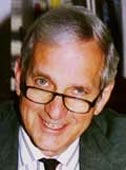Checklists, Guidelines, Standards and Rules

Martin McKneally
|
At the time that the checklist
story broke in the New England
Journal of Medicine and international
media in January, I was
involved in a spirited online
writing group setting standards
for cardiothoracic surgeons.
Like the orthopaedic surgeons
described in our article on page
5 on the conflict of interest
debate, members of my specialty
are receiving increased attention to their financial relationships
with manufacturers of expensive intracardiac
devices such as valves, pacemakers, defibrillators and
pumps. As we developed our recommendations, we
were concerned about the tone and the level of forceful
persuasion that would be appropriate. The ethics committees
of our two specialty societies were put to work.
Should they be guidelines? Somehow this seemed
too slack. A nautically inclined physician-lawyer-ethicist
in my Practical Ethics class gave a helpful explanatory
definition. Guidelines were originally ropes that ran
from the bow to the stern when boats were less safe
and seamen were at greater risk of being swept off the
deck in rough seas. They could seize the guideline to
save themselves from washing overboard. The coercive
enforcement was by common sense rather than mandate.
Guidelines are helpful, but they aren't mandatory.
After some discussion, libertarian arguments in our
surgical group gave way to a consensus that we would
set professional standards for managing conflicts of
interest. Such standards are enforced by collegial opinion
within the community. However, because they are codified
and referencable as standards, they can be used in a
court of law against a professional who does not comply
with them.
|
The checklist that was introduced into the operating
room at Toronto General is a policy instrument.
Enforcement of its use is coerced by peer pressure, a
form of soft power (1) toward the accomplishment of
an aspirational goal of complete compliance. Similarly,
Jack Cronenwett's policies adopted at the cooperating
vascular surgery sites of the Northern New England
Group (see page 8) depends on peer respect, collegiality
and loyalty to an enterprise undertaken by consensus in
a voluntary group of professionals. By definition, professionals
are self-regulating because their arcane skills
and knowledge are not readily susceptible to external
regulation by non-professionals in the community,
the institutional administration or the government.
As our electronic discussion group developed what we
initially characterized as guidelines, we worried that
non-compliance by some of our members might incite
eloquent exposés in the news media, resentment in the
community, and more rigorous enforcement through
government regulation. Conflict of interest issues in
banking, finance, medicine and surgery are moving
community opinion toward requiring regulation with
the force of law, particularly in the United States where
Senator Grassley of Iowa is threatening to file criminal
charges against orthoapedic surgeons for taking kickbacks
to influence institutional choices of expensive
prosthetic devices.
Returning to the World Health Organization checklist,
Bryce Taylor draws an accurate analogy to automobile
seatbelts. Once their safety was proven, their use
had the moral force of guidelines. As further evidence
developed through the Cornell crash survey and other
scholarly evaluations analogous to the WHO checklist
project, their use became a standard, and now in many
jurisdictions it is enforced by the rule of law. Just as we
owe a debt of gratitude to the trauma surgeons who
demonstrated the lifesaving value of automobile seatbelts,
we owe a debt of gratitude to our WHO researchers,
including our Toronto team of Bryce Taylor, Anne
Slater and Richard Reznick for developing the proof that
will eventually make the checklist the standard of practice
for surgical patients and operating teams.
Martin McKneally
Editor
(1) Nye, Joseph S., Jr. Soft Power. Foreign Policy. 1990;80:
153-171.
|